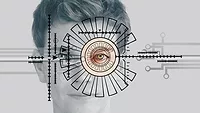An Intelligent Platform for Intelligent Security Solutions

The internet of things and our 24/7 connectedness has helped generate growing interest in Smart Homes, Smart Cities and the capability to use technology to give us more control over our lives. In the monitoring and surveillance sector, Artificial Intelligence based solutions such as Intelligent Video Analytics (IVA), are entering the mainstream as they reach levels of refinement, usability and affordability. Product manufacturers and software developers have responded with solutions which reflect the competitive drivers and creative resources in our sector.
For users, the more choice, the better. IVA not only delivers targeted detection but can also anticipate events as behaviour patterns are identified and evaluated. Significant cost savings can be achieved by automating event and subject searches, reducing the number of active video displays in the control room, managing false alerts and optimizing operator resources. New technologies can have a transformational effect with the pace of innovation set to increase.
Multi-Function Control Rooms
Most control rooms, however, do not perform only a single function. Even if the only task is to monitor CCTV, there will typically be a need to be able to handle signals and video from a number of different manufacturers’ products. Many of these products are supplied with free management software designed for use with those specific products. It makes sense to use these management applications if they do the job, there are not too many different product types, not too many sites, too much activity or complexity.
However, the control room can run into trouble when the operator has to deal with a multitude of different applications running on a variety of operating systems and hardware, all with their own distinctive handling processes. There is also the issue of having to run and maintain multiple systems. The scope for something to go wrong is exponential. When the speed of alarm response suffers and managing multiple applications, and hardware, becomes difficult, this is the point at which the benefit of using manufacturers’ applications start to recede. This is also the time to think about migrating to a multi-protocol platform.
The Monitoring Platform
Gathering the right information for the correct response is a task which IVA does very well. But, when it forms part of an integrated system, what you do with that data is also important. While the IVA, whether edge or server based, provides the source data of the remote event, generally it will not interact with other detection devices without the intervention of third party processing.
Some CCTV and IVA systems are more suited to specific tasks than others. It is therefore important to select the right combination of solutions rather than taking a one-size fits all approach. In this instance, the most effective method for executing standard response tasks and applying priorities is to handle all devices and systems within the platform. And if the platform is continuously developed and enhanced, this will also allow the user to adopt new technology as it becomes available while retaining legacy investments.
The monitoring platform does not replace the functionality of the device or IVA but adds filtering, further processing and high level integration to deliver more useful data. It should be capable of receiving and communicating data, video and audio from all the monitored products and systems, which should be presented in a common user interface at the workstation. Interoperability, for example, associating a zone reported by an alarm panel with an image from a CCTV system can be managed at the ‘account’ level using software configuration tools.
Getting the Job Done
Highly complex systems require a specific level of installation skills and experience. Monitoring control rooms know very well that the quality of installations vary. Where there are serious issues, notable among them a high rate of false activations, in addition to the burden of disposal, there is the increased the risk of missing genuine alarms. While the priority should always be to resolve such issues as quickly as possible, it is important that in the meantime the control room is able to minimize disruption. Specific tools to isolate problem sites and devices should be provided by the platform while issues are being resolved. In the control rooms where operators are performing multiple tasks - conventional alarm handling, asset tracking and general surveillance duties – having an easy means of managing problem sites is even more vital. All this is in addition to the advantages of having a single reporting database, reduced training, space and power requirements and rationalized hardware and technical support.
Both the commercial remote video receiving centre, and the private control room serving the specific needs of its organization, need a common platform to bring it all together. New technology continues to provide enhanced security and safety protection, with IVA starting to consign some older detection technologies to history. Users may reflect that, to maximize the benefits of such technologies, the most effective approach is to manage them all on a well-featured monitoring platform.
Looking for a reprint of this article?
From high-res PDFs to custom plaques, order your copy today!








